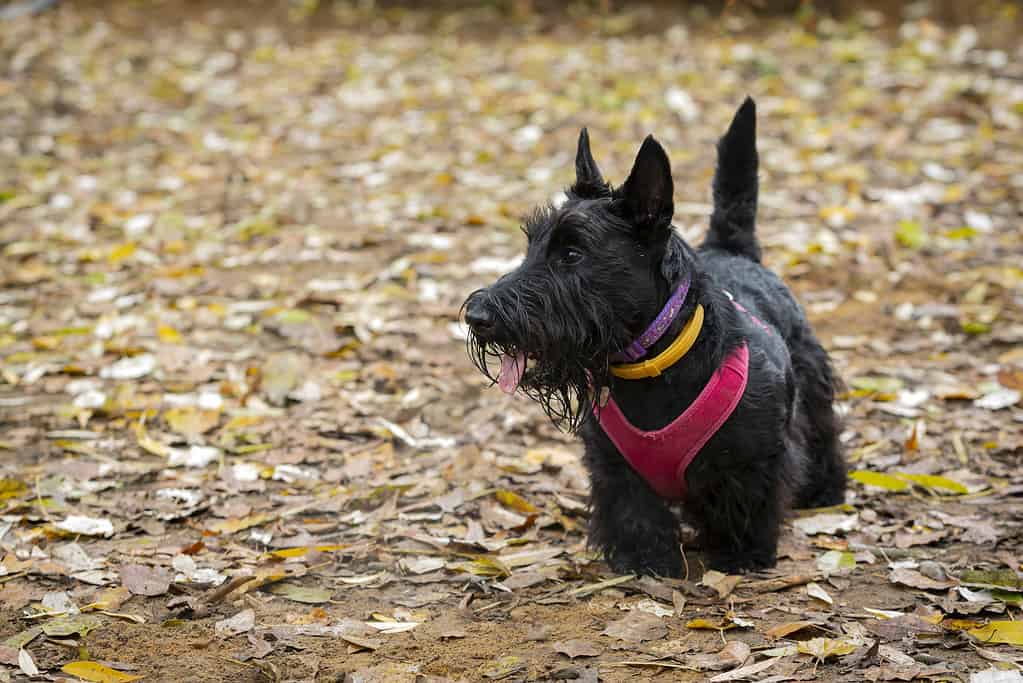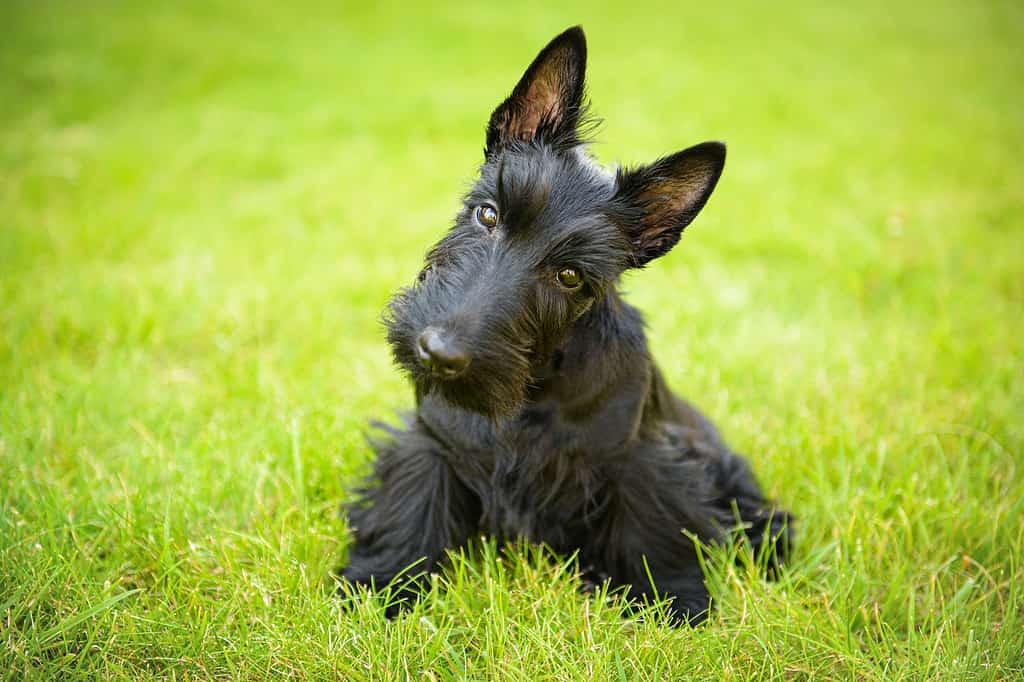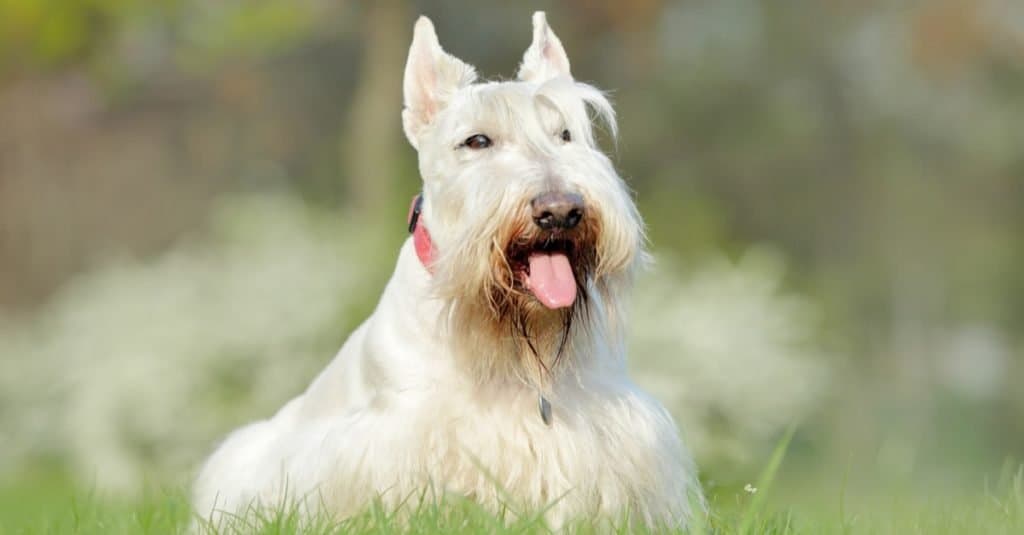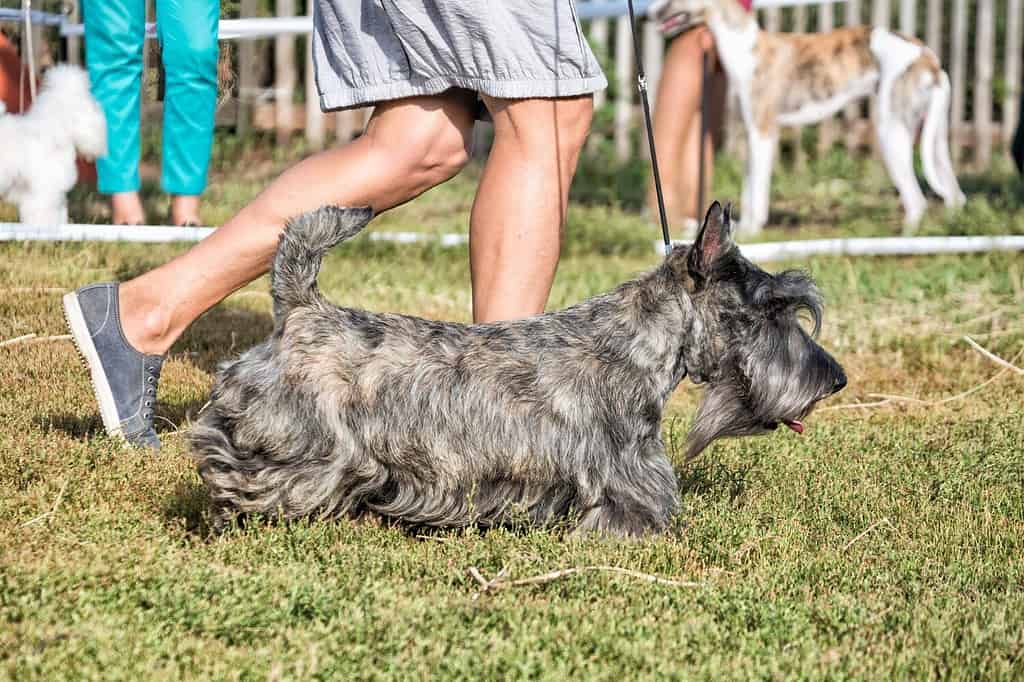Few dog breeds have as distinctive an appearance as the Scottish terrier. Short, solid dogs, they are usually groomed to have boxy mustached faces, perky trimmed ears and tails, and smooth undercoats on their backs with wiry skirts around the sides. Stubborn and feisty but loyal and affectionate, Scottish terriers make great watchdogs and companions. The most common color for a Scottish terrier is black, but they come in some rarer light colors as well. If you’re considering adopting a Scottie, this article will expand your knowledge of the breed and its colors to help you with your decision.
History of the Breed

The Scottish terrier originated as a hunting dog and vermin-catcher in Scotland.
©Andrey Kanyshev/iStock via Getty Images
As the name implies, the Scottish terrier originated in Scotland. Farmers developed the breed to be short and solid, able to get into badger, otter, or fox dens and dig powerfully for rats and other vermin. They have a low center of gravity that helps them hold their ground solidly in battle with beasts bigger than themselves. They were also developed to have strong tails so that the owner could pull them out of a tunnel by their tail without injuring the dog.
The breed became popular in the United States in the 1930s. Celebrities such as actress Dorothy Lamour and President Franklin Roosevelt were Scottie owners who helped make the breed well-known. Scotties have become well-known in the popular culture through movies and animated films. One was even used as a favorite game piece in the popular board game Monopoly. You may have even fought with your siblings over who got the Scottie!
Scottie Characteristics

This one-year-old puppy has the typical quizzical head tilt that will melt your heart as a Scottie owner.
©Ohoho/iStock via Getty Images
Scottish terriers are small dogs, growing 10-11 inches tall and 18-22 pounds. They have a two-layer coat, coarse and wiry on the outside and with a short, soft, and smooth undercoat. They require regular grooming to maintain that “Scottie” look; otherwise, they will soon turn into amorphous looking fuzzballs.
Temperamentally, Scotties are alert, curious, and perky. They are fearless with other dogs no matter how big they are. This makes them excellent watchdogs but requires attention to socializing them with other dogs. They are also known to be stubborn and challenge their owners and other family members for leadership. They require consistent, firm, positive training. It is particularly important to work with children in the household to help them learn to be appropriately firm with the dog as well.

©Ondrej Prosicky/Shutterstock.com
Colors: Rarest to Most Common
Scotties come in three main colors: wheaten, brindle, and black. There are variations within each of these that can be rare and valuable. On average, purchasing a Scottish terrier from a breeder can cost $900-$3,500 depending on whether you want a pet-quality or show-quality animal and the rarity of the dog’s characteristics, including coat color.
1. Wheaten

A golden yellow-white color is rare in Scottish terriers.
©Pavel Shlykov/iStock via Getty Images
Wheaten is the lightest shade of coat available in a Scottish terrier. There are no pure white Scottish terriers. If you see a stark white terrier, it is most likely a West Highland terrier, which looks similar to a Scottie but is a different breed. Wheaten Scotties can be light shades of golden yellow that look off-white. Wheaten also encompasses dogs with rare and desirable shades of caramel or rust.
2. Brindle

Brindle is a striped black and brown color pattern.
©Sergey Ginak/Shutterstock.com
A brindle Scottie isn’t exactly rare, but it is rarer than a pure black dog. Brindle is a striped pattern that leaves the appearance of light and dark splotches. The variants include black brindle, silver brindle, and red brindle.
3. Black

Black is the most common color of the photogenic Scottish terrier.
©MayWhiston/iStock via Getty Images
Most Scottish terriers are black, though they may have a white patch underneath. As they age their coats develop grey and white hairs, which further adds to their wise, distinguished appearance.
The photo featured at the top of this post is © Anna Tkach/Shutterstock.com
Ready to discover the top 10 cutest dog breeds in the entire world?
How about the fastest dogs, the largest dogs and those that are -- quite frankly -- just the kindest dogs on the planet? Each day, AZ Animals sends out lists just like this to our thousands of email subscribers. And the best part? It's FREE. Join today by entering your email below.
Thank you for reading! Have some feedback for us? Contact the AZ Animals editorial team.







